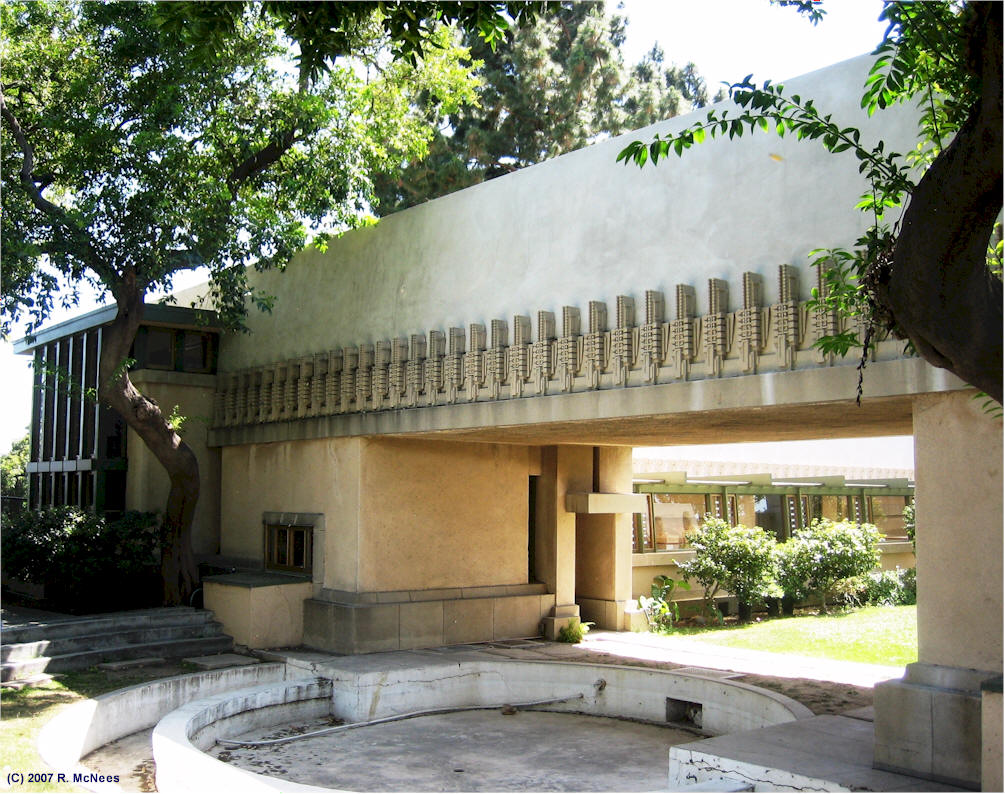Hollyhock House
American heiress, Aline Barnsdall commissioned Frank Lloyd Wright to design Hollyhock House because she wanted to build a theatre for her newly formed theatrical company. Her goal was to use her experience and vast wealth to establish a centre for art theatre in American to rival those found in Europe. She wanted a place where her architect, Frank Lloyd Wright “could build a theatre, a community, and a home that would match her dreams with a boldness and individuality of their own.â€Â Aline Barnsdall hoped her experimental project for an American theatre community would grow and prosper in California.
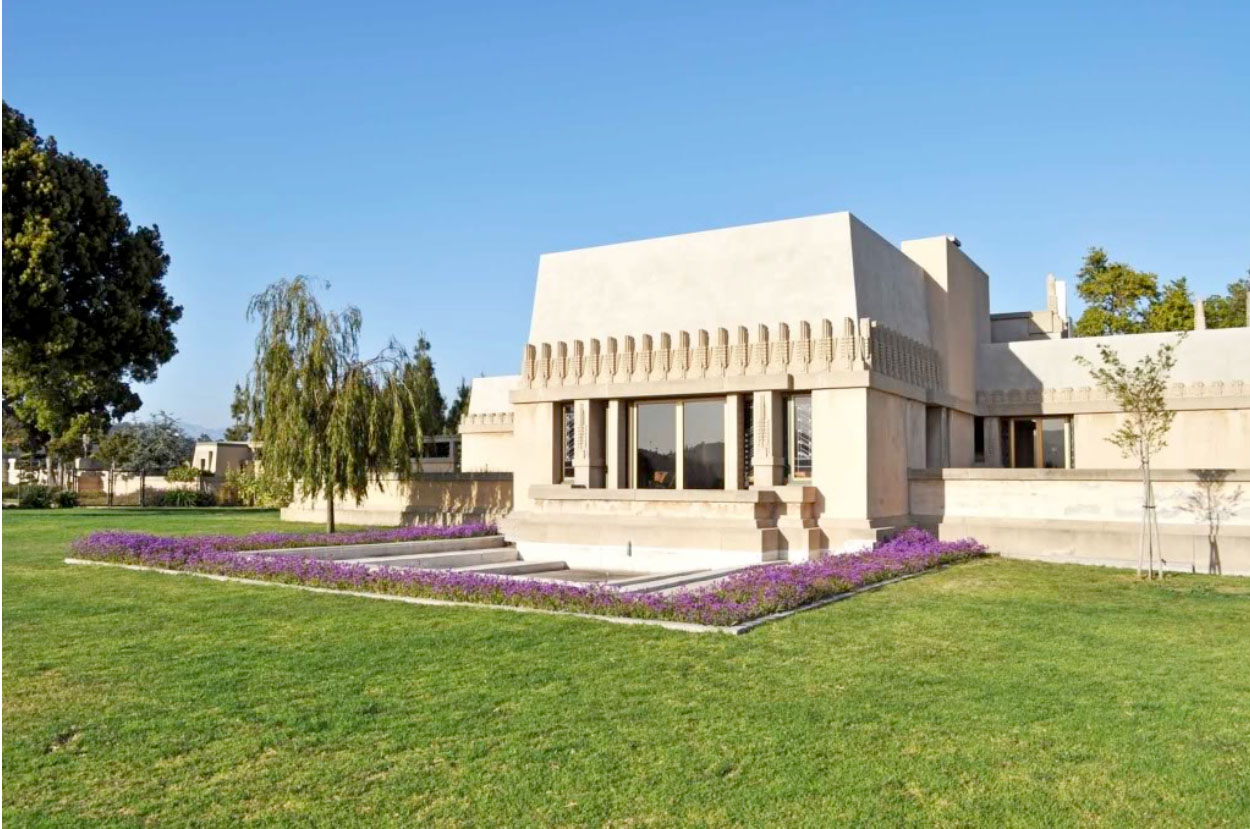 This collaboration between Frank Lloyd Wright and Aline Barnsdall during the period of 1915 and 1923 was unusual because it called for a rethinking of building types and challenged the “notions of house design, family life, and domesticity.â€Â Hollyhock House was not designed for the private life of a family but rather as a centrepeice in a public garden, and a theatre complex. This freed up architect and client to push the boundaries of architecture including the experiences of monumental form, theatricality, and how the house framed the landscape.
This collaboration between Frank Lloyd Wright and Aline Barnsdall during the period of 1915 and 1923 was unusual because it called for a rethinking of building types and challenged the “notions of house design, family life, and domesticity.â€Â Hollyhock House was not designed for the private life of a family but rather as a centrepeice in a public garden, and a theatre complex. This freed up architect and client to push the boundaries of architecture including the experiences of monumental form, theatricality, and how the house framed the landscape.
The hollyhock is used as a central theme to the house, with many symmetrical decorations adapting the plant’s general appearance. Planters are decorated with the motif and filled with the plants themselves, and Wright’s stained glass windows feature a highly-stylized hollyhock pattern.
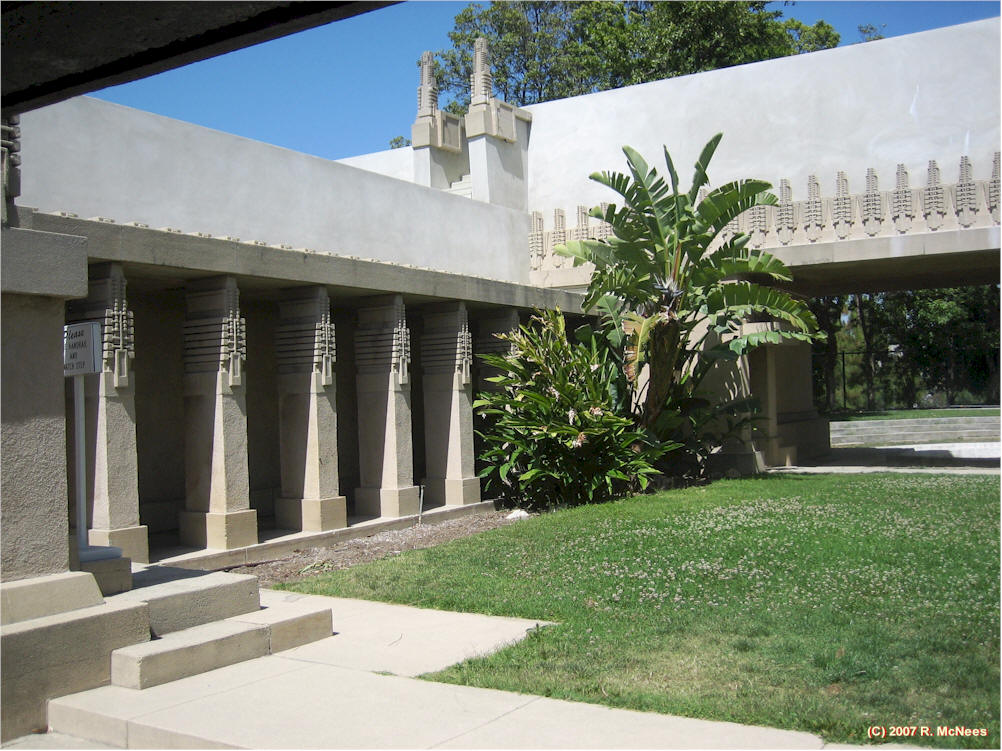
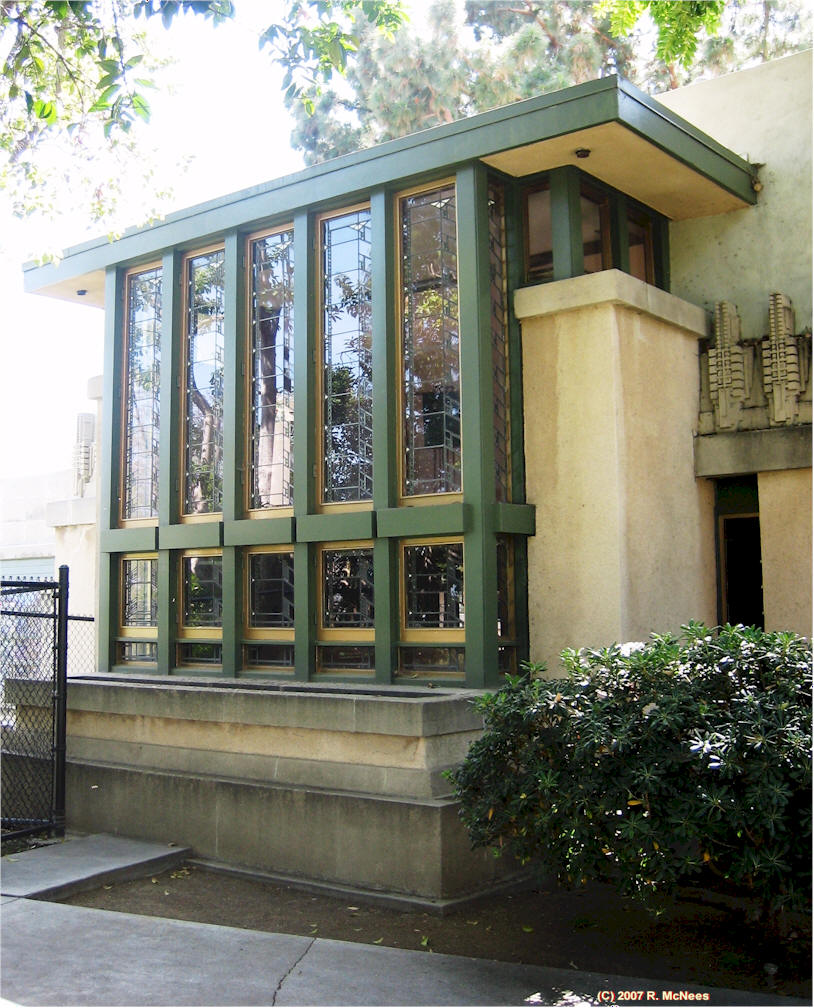
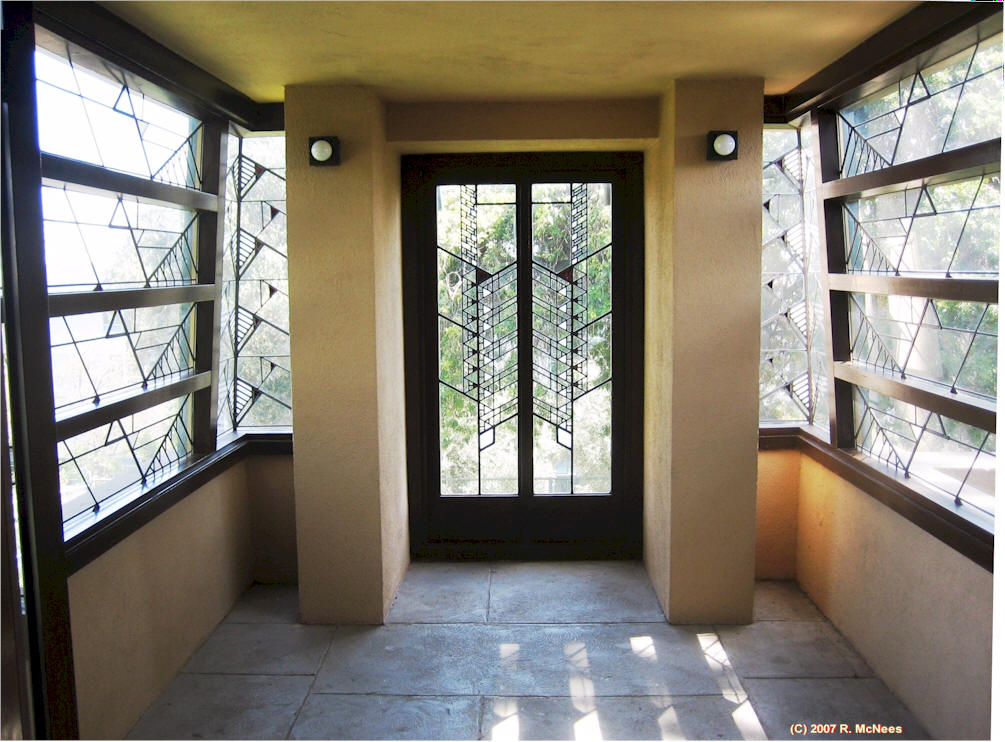
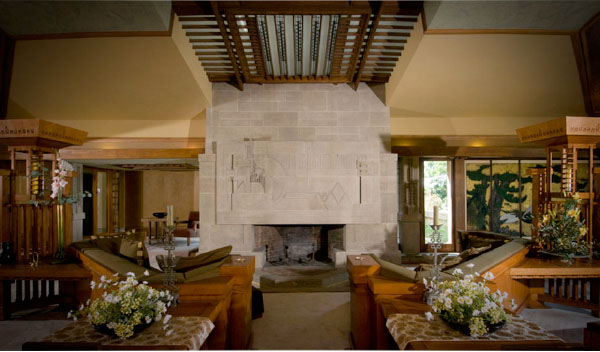 Alice T. Friedman contends that Hollyhock has a lot to teach us about “creativity and about the sorts of new experiences that become possible when conventions of social behaviour, program, and planning are challenged.”
Alice T. Friedman contends that Hollyhock has a lot to teach us about “creativity and about the sorts of new experiences that become possible when conventions of social behaviour, program, and planning are challenged.”
Disillusioned by the costs of construction and maintenance, Barnsdall donated the house to the city of Los Angeles in 1927 under the stipulation that a fifteen-year lease be given to the California Art Club for its headquarters, which it maintained until 1942.Hollyhock has been used by various organizations and has had restoration work done over the years. The U.S. Department of the Interior designated Hollyhock House a National Historic Landmark in 2007 (Wikipedia)
All photos are from Alice T. Friedman’s book, or as noted by Rick McNees.


